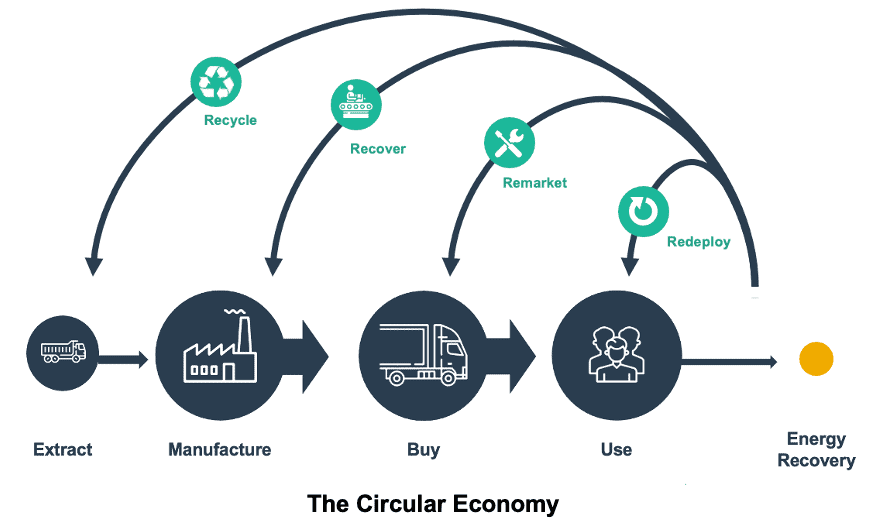The Road to the Circular Economy

As the world realizes that the linear economy is unsustainable, companies are under pressure by regulations, investors, consumers, and employees to lower their carbon footprint and transition to a circular economy.
What is the circular economy and what role does logistics play? Starting from where we are today, let’s look at how logistics will be pivotal in the journey to a more sustainable future.
In today’s linear economy, material is mined and then manufactured into goods to be distributed, used, and then thrown away. Unfortunately, this business model has resulted in the pollution of our air, water, and land, in addition to the warming of our planet.
The Linear Economy
As the world realizes that the linear economy is unsustainable, companies are under pressure by regulations, investors, consumers, and employees to lower their carbon footprint and transition to a circular economy.
The Circular Economy
In the circular economy, products are designed and built with sustainability in mind, used at their highest value for as long as possible, and then redeployed, refurbished, remanufactured, or recycled instead of being disposed.
These various “loops” within the circular economy can be within a product’s original supply chain (such as refurbishing a phone) or can feed an entirely new supply chain (such as using waste toner in paving material).
Just as the supply chain connects trading partners in today’s linear model, logistics providers will continue to connect trading partners in tomorrow’s “supply loops.”
As DHL’s “Delivering on Circularity” white paper says, “While the successful transition toward circularity is certainly a shared responsibility and effort, logistics players are the natural backbone. Circularity changes the way materials and products move – from a straight line to a regenerative circle – and efficiently managing the flow of goods is what logistics is all about.”
This offers both challenges and opportunities to the logistics industry.
With many companies committing to reducing and eventually eliminating their carbon footprint, transportation will be one of the first areas of scrutiny. As a result, businesses will look for lower-carbon shipping options, both in transport type and distance.
Furthermore, as products are designed with circularity in mind, traditional suppliers of today’s raw materials will be augmented or completely replaced by remanufactured, recycled, or even waste streams from processes in other industries. This presents opportunities for logistics providers to grow into other value-added services.
For example, an airport might choose to purchase carpet-as-a-service, similar to the way Schiphol Airport purchases lighting-as-a-service from Philips today. Carpet would be provided and replaced, with the used carpet being recycled and made into new carpet, rather than heading to landfill.
While a logistics partner would be key to the transportation of materials between the trading partners that make up this supply loop, they could also offer value-added services. After all, that carpet needs to be shredded before it can be recycled. But whether that service is provided by a logistics partner, or a new local business that becomes part of the supply loop, remains to be seen.
According to EY’s “Why the Circular Economy is Transforming Traditional Logistics,” “Logistics service providers are already in a central position and can take on these new tasks instead of merely transport and storage. Such value-added services also have higher margins than the traditional business.”
Like the flow of materials between trading partners, the flow of information between trading partners is critical. Technology providers must help businesses find one another and exchange data to collaborate throughout the supply loop. Similar to the logistics example, if existing technology companies do not grow to meet the demands of supply loops, new start-ups will fill the gap.
The coming years will see a reinvention of the way business is done, from an unsustainable linear past to a collaborative circular future. Since logistics connects multiple customers and industries, it has the unique opportunity to be the “driver” of circular ideas. Whether it be offering value-added services, lower carbon footprint transportation options, or reusable external packaging, logistics will be a key part of the world’s circular economy journey.

